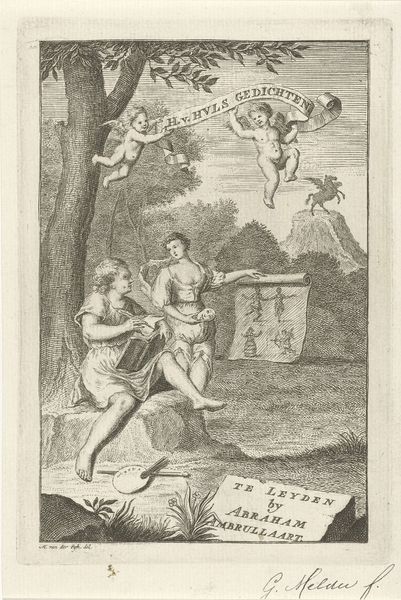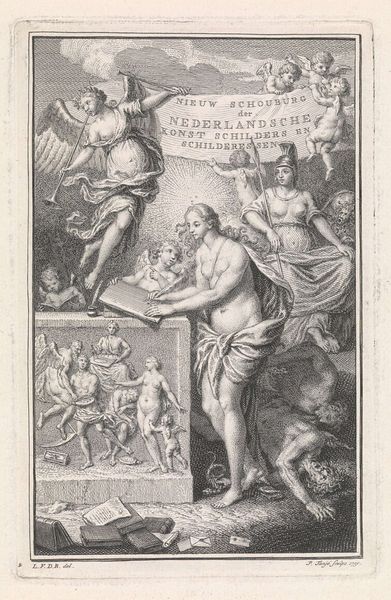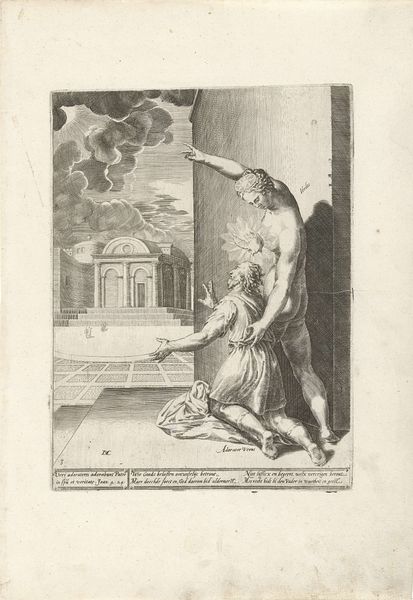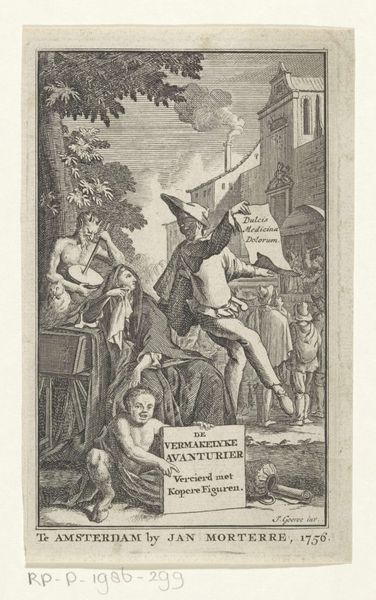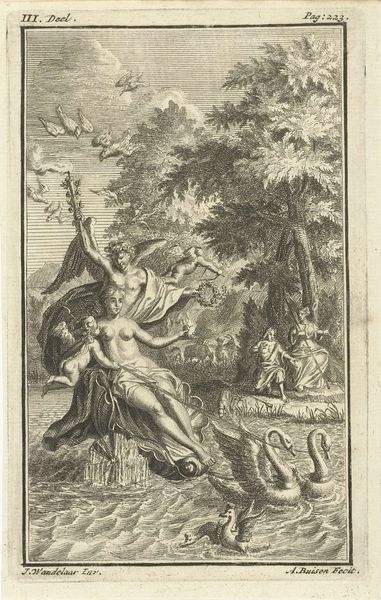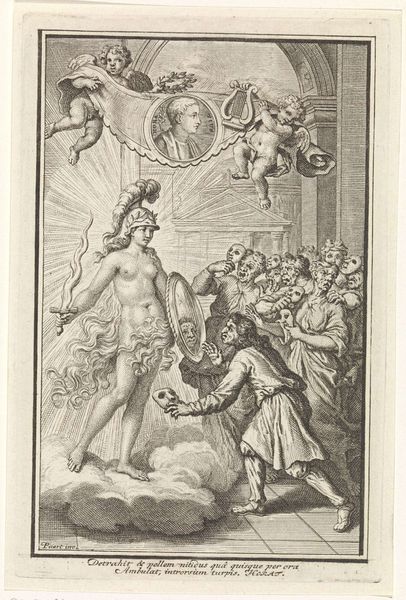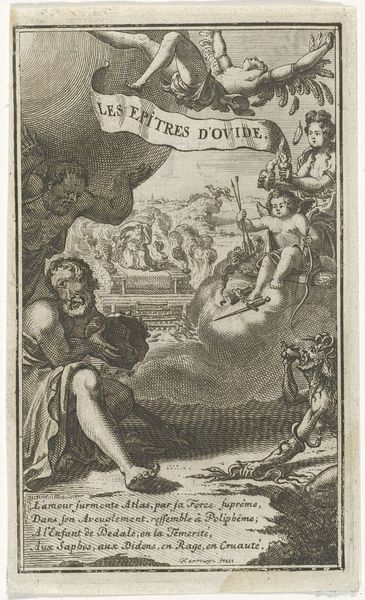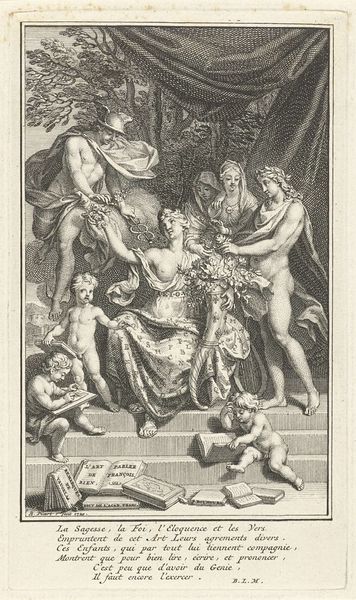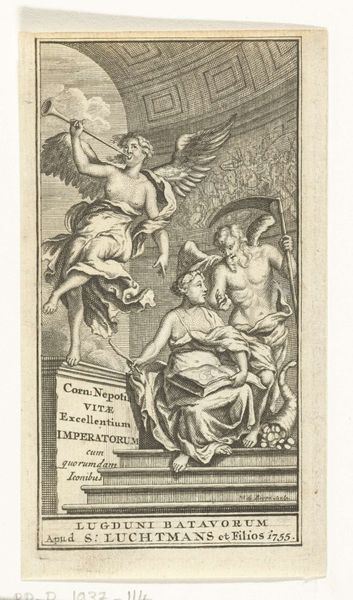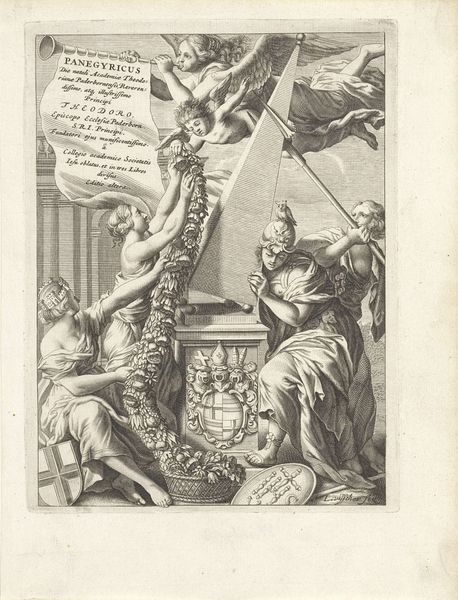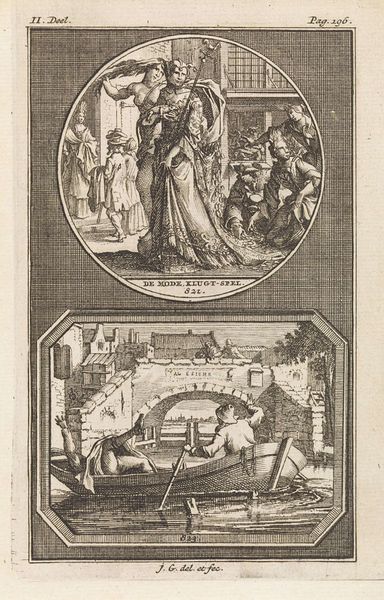
engraving
#
portrait
#
aged paper
#
toned paper
#
baroque
#
pen sketch
#
pencil sketch
#
old engraving style
#
figuration
#
personal sketchbook
#
pen-ink sketch
#
line
#
pen work
#
sketchbook drawing
#
history-painting
#
sketchbook art
#
engraving
Dimensions: height 147 mm, width 90 mm
Copyright: Rijks Museum: Open Domain
Curator: At first glance, I sense a lighthearted reverence, a buoyant homage rendered with fine, delicate lines. What do you perceive? Editor: Before us is "Apollo with Portrait of Caspar Brandt," an engraving made in 1702 by Christoffel Lubienitzki, presently held at the Rijksmuseum. The piece appears to be printed on aged paper. Curator: Indeed. Notice how Lubienitzki deploys line weights—the heavier strokes delineate the central figure of Apollo, anchoring him within the ethereal composition, while the cherubic figures above, bearing the banner, possess a more fleeting, almost spectral quality. Semiotically, the lines create hierarchy, reinforcing the importance of Apollo. Editor: You know, it strikes me as an incredibly intimate gesture. Placing Apollo, the god of the arts, alongside Brandt, almost suggests an apotheosis, like he’s immortalizing Brandt through the divine association. What is Brandt’s poetry, though? What does it taste like? I want to read his verses, now! Curator: Functionally, one might view the work as a frontispiece, a formal tribute preceding a collection of poetry. Observe how the engraving integrates classical allegory. We can deconstruct the layers: Apollo, as you noted, the god of music and poetry, accompanied by putti—symbols of inspiration. In the backdrop, the pyramid functions as a Neoplatonic symbol. This fusion elevates the portrait to a timeless celebration of artistic achievement. Editor: Yes, and it's baroque in its essence; look at how those playful putti counterbalance the very somber portrait! Even though the piece honors someone’s poems, this scene breathes humor and hope; there's a promise of enduring legacy through art. The whole engraving dances, the cherubs are so full of joie de vivre. Curator: Precisely, a considered approach to allegorical representation is characteristic of the period, each figure chosen and rendered with specific intent to augment the honor being bestowed. However, I maintain, the engraving also stands alone as a finely executed object of contemplation. Editor: Indeed! After a close view, I’m mostly taken with the humanity of this piece—the careful shading on Apollo’s chest, or even the faint hint of mischief in the cherub’s eyes. And I agree about it being a testament, through image, of human accomplishment—and I appreciate your sharp focus on that. Curator: Likewise, your insights enrich our perception of this piece. Perhaps by analyzing visual elements with rigor we uncover unexpected nuances.
Comments
No comments
Be the first to comment and join the conversation on the ultimate creative platform.
